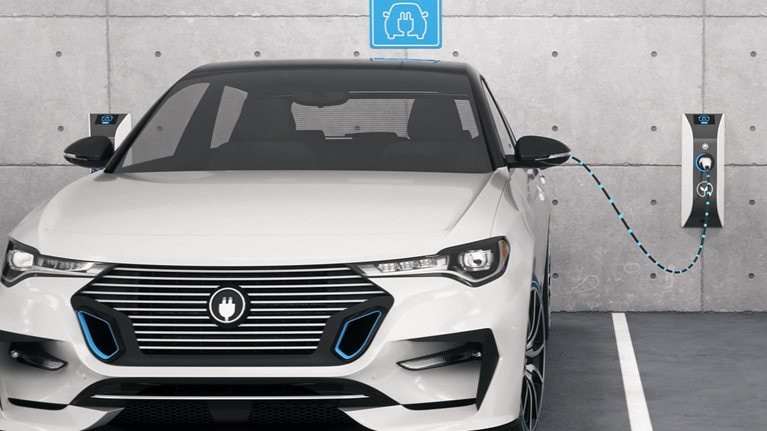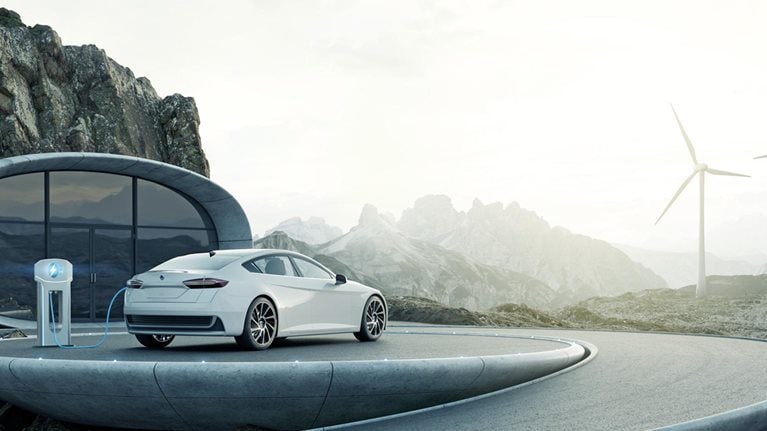Although the United States has long lagged other regions in electric vehicle (EV) adoption, the country is now reporting record growth. EVs represented about 8 percent of all new passenger cars sold in the United States in 2022, up from around 5 percent in 2021.1 By 2030, this figure could rise to 53 percent.
The United States will need about 28 million ports by 2030 to meet the demand for electricity by zero-emission passenger vehicles (Exhibit 1). Private ports are expected to increase in number from around 2.5 million to nearly 27 million, representing about 95 percent of the total.

There are two types of public charging: direct current fast charging (DCFC), which is used on highways and for fast fill-ups, and slower Level 2 (L2) charging, which is available at places such as grocery stores, malls, car dealerships, golf courses, and banks, where people may park for longer periods. L2 charging may also occur next to sidewalks or near street parking. About 150,000 L2 and DC plugs are now available across the United States, but that number is expected to increase to 1.5 million by 2030, when they will represent about 5 percent of the total.
While public fast charging is a piece of the overall charging solution, current EV demand for electricity is still so low that profitability is challenging—and this could remain the case over the short to medium term. To help charge-point operators improve their financial picture both now and during scale up, we examined the EV market, including the ongoing shifts in ownership patterns and charging demand. We then analyzed the factors that influence charging station revenues and identified potential improvement levers for optimizing profitability. Among the most important: a focus on utilization and pricing.
Public charging is required, no matter what
Currently, most EV owners tend to be home owners with access to a home charger, and they often have a second vehicle for long-distance trips. But even people that fit this profile will sometimes need public charging. For instance, they might forget to charge their vehicle overnight and thus need to charge on the road, or they might find that the slow L2 charger at their workplace parking garage, where they usually connect during an eight-hour workday, is out of commission. Additionally, long journeys—those over 150 to 200 miles—will necessitate public charging.
As EVs become more common and their owners no longer come primarily from higher income groups, the percentage of charging that occurs at home is expected to fall to 50 percent by 2030 (Exhibit 2). Although about 65 percent of the US population own or rent a single-family home, many people lack garages where a charger could be placed, or find that installation is prohibitively expensive.2 Apartment dwellers may also lack a suitable installation site or encounter resistance from landlords who do not want chargers on the premises. In such situations, public charging, either fast or overnight, is the mainstay.

Recognizing the need for public chargers, many new players are now entering the sphere. For instance, some major automakers are banding together to invest a minimum of $1 billion in a joint venture that will build stations with about 30,000 fast chargers in urban and rural areas of the United States.3
Would you like to learn more about the McKinsey Center for Future Mobility?
The challenging economics of charge-point stations
While charge-point operators can follow multiple strategies for generating revenues, two business models are now most common (Exhibit 3):
- Owner-operator. Under this model, the charge-point operator is responsible for all capital costs, including hardware and installation, and for all ongoing operations and maintenance. Owner-operators generate revenue by selling electricity and through other streams (for instance, incentives and energy credits). Currently, three companies—Electrify America, Evgo, and Tesla—have 80 percent of the market for public DCFC charging.
- Solution providers (site-host owners, third-party operators). Under this model, the charge-point operator sells chargers to a site host, such as a grocery store or dealership, which bears the cost of hardware and installation. The site host also pays the operator an ongoing fee for operations and maintenance.

Regardless of business model, the up-front capital costs for fast charging stations are high. A 150 to 350kW DCFC charging unit can cost anywhere from $45,000 to over $100,000, and installation costs can range from $40,000 to over $150,000. Additionally, grid upgrade and integration costs can amount to millions, depending on the number of fast chargers installed at the location.
We examined the economics for a hypothetical DCFC charging station with an owner-operator business model in California. In line with typical patterns, we assumed the charging station would have 4 150kW chargers.4 In our first analysis, we assumed that the charge-point operator did not receive any government subsidies or credits; in the second, it did.
Fast public charging-station economics without subsidies or credits
Assuming 15 percent utilization—equivalent to about seven 30-minute charging sessions per day—our hypothetical station would generate $265,000 to $285,000 in annual revenue, given a price of $0.45 per kWh dispensed. (Pricing may vary by time of day). On the cost side, we assumed annual expenses of $220,000 to $250,000 for electricity, demand charge rates, fixed operational expenditures, R&D, and SGA.5 Capital expenditure depreciation would total about $85,000 to $95,000 yearly. With these metrics, the station would lose about $40,000 to $50,000 per year in EBIT (Exhibit 4).

Fast public charging-station economics with subsidies and credits
If the same fast public charging station received government subsidies or credits, the economics would be very different because these programs can significantly reduce costs. For instance, the recent Inflation Reduction Act includes up to a 30 percent tax credit for EV charging stations within low-income or non-urban census tracts through December 2032, up to a maximum of $100,000 per charger.6 The National Electric Vehicle Infrastructure (NEVI) Formula Program, which will disperse $5 billion in funding from the Department of Transportation over a five-year formula grant period, provides credits and subsidies through the end of fiscal year 2026.7 For each charging station, it will fund up to 80 percent of project costs, provided that the station serves the public and meets other criteria, such as being located along Federal Highway Administration Alternative Fuel Corridors.8 If the charging station in our example received subsidies or credits, annual capital-expenditure depreciation would fall by an estimated $70,000 to $75,000. With this decrease, the station’s EBIT would be positive (in the range of $25,000 to $30,000).

EV fast charging: How to build and sustain competitive differentiation
Several levers will be required to achieve profitability
Even if fast public charging stations do not receive subsidies or credits, they may still be able to improve their bottom line. We have identified several potential levers for driving improvements that span multiple areas: utilization, electricity cost, electricity price, demand charge cost, lifetime hardware costs, and ancillary revenue (Exhibit 5).

While all of these levers are important, charge-point operators would have to apply them aggressively to make a difference. Consider utilization and competitive pricing, which could potentially drive the greatest gains. Using our example of a typical fast public charging station in California, the owner-operator would break even if utilization increased from 15 percent to 20 percent, or if the price for charging customers increased from $0.45/kWh to $0.53/kWh. Profitability would also be possible in other scenarios (Exhibit 6).

Achieving the desired improvements in price and utilization may not be easy, however. The average nationwide annual utilization rate for 2022 was about 7.5 percent, with the average for highest recorded month around 12 percent—both lower than the 15 percent utilization assumed in our example.9 Going from that level to 20 percent utilization will require an extremely large increase in demand, but we believe that this is feasible in the coming years, given expectations about the increased number of EVs on the road and the belief that charge point operators will begin focusing on utilization rates when deciding where to build new infrastructure, rather than continuing to prioritize market expansion.
Pursuing ancillary revenue streams, such as retail sales or advertising, could also help public DCFC charging stations improve the bottom line. At traditional gas stations, 35 percent of sales revenue comes from the associated convenience stores or food service. (About 50 percent of people who buy fuel also make retail purchases). Since public DCFC stations are placed in a wider variety of locations than traditional stations, there may be more variation in the opportunities that they pursue. If the DCFC station in our example generated $12,000 in ancillary revenue streams, it could break even.
EV sales have finally gained momentum in the United States and continue to accelerate. More public fast-charging stations must be built to support the new EVs, but they require careful planning. Stakeholders must select station locations that maximize utilization and consider dynamic pricing—for instance, increases during commuting hours—to balance demand for chargers. While subsidies will be necessary for near-term profitability, public charging-station operators must also apply other improvement levers, such as branching into retail offerings, for long-term success. These efforts, combined with the support of OEMs, government agencies, real estate operators and others, will help DCFC operators build a profitable public charging network across United States that sustains the growth of EVs.


